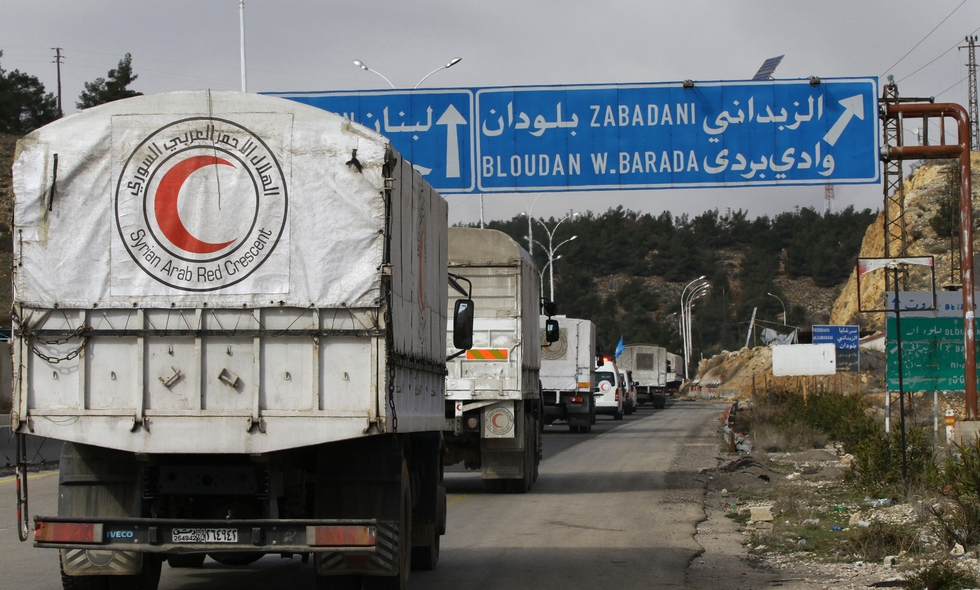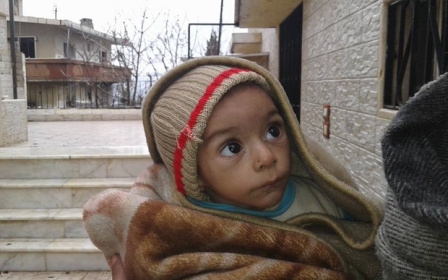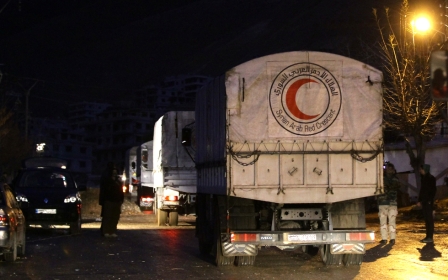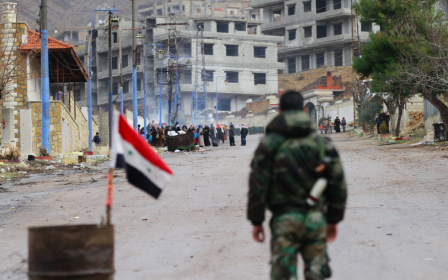Siege warfare: the key facts in Syria

In nearly five years of conflict in Syria, sieges have become a key weapon of war employed primarily by the regime, but also rebel forces and the Islamic State group. Here are some key questions and answers about sieges in Syria:
How many people are under siege?
The United Nations said last month that an estimated 486,700 people in Syria were living under siege, more than half of them in areas besieged by the regime.
They are among 4.6 million people in so-called "hard-to-reach" areas and locations, subject to restrictions that severely limit their access to services and humanitarian assistance, the UN said.
Other groups, such as Siege Watch, have told Middle East Eye that the actual number of people is much higher - more than one million under siege and many more facing hardship. Doctors Without Borders (MSF) puts the number at between one and two million.
What are key areas under siege?
Government sieges
The areas under government siege are mostly clustered around the capital Damascus, with regime forces surrounding nearby towns that are controlled by rebels.
Some of the worst affected include Douma, Arbin and Zamalka in Eastern Ghouta, and Moadimayat al-Sham and Daraya in Western Ghouta.
Further afield in Damascus province are Zabadani and Madaya, which grabbed international attention recently after reports of starvation there.
The medical sharity Doctors Without Borders say that residents are still starving to death despite recent aid shipments.
Activists accuse the government of using the sieges to force rebels to lay down arms, and in some cases the sieges have been lifted or temporarily eased during truces.
In Moadimayat al-Sham, for example, a siege that began in 2013 was eased the following year after a truce.
But the area was reclassified by the UN as besieged in January 2016 after the government once again tightened restrictions, causing food shortages.
Rebel sieges
Rebels have also employed siege tactics against the Shia villages of Nubol and Zahraa in Aleppo province, as well as Fuaa and Kafraya in Idlib. The sieges of Nubol and Zahraa were reportedly broken on Wednesday by Hezbollah fighters.
Opposition forces have sought to tie the fate of Fuaa and Kafraya to that of Zabadani and Madaya, insisting any aid to the government-held villages be matched with aid to the rebel-held towns.
Rebels including al-Qaeda affiliate the Nusra Front have also laid siege since 2014 to the Kurdish town of Afrin in Aleppo province, having been unable to capture it from Kurdish forces.
Islamic State group sieges
IS has laid siege since January 2015 to the eastern city of Deir Ezzor, where more than 200,000 people live.
The group controls most of the area in the surrounding province, but the government has clung to parts of the provincial capital.
Unlike in rebel areas under government siege, the regime has been able to deliver some aid to areas it controls like Deir Ezzor and Fuaa and Kafraya by airdropping supplies.
Russia has also flown in aid for Deir Ezzor, landing supplies at the adjacent military base still held by the regime.
Where has aid been delivered?
Aid has been delivered sporadically to many of the areas under siege, but humanitarian groups say such piecemeal access is insufficient.
Aid groups entered Madaya, Fuaa and Kafraya several times in January, but the NGO Doctors Without Borders said last week that 16 more people had died in Madaya despite the additional assistance.
And organising such deliveries is a sensitive and complicated process, with convoys often cancelled at the last minute when permissions are withdrawn by the government or fighting flares.
According to the UN, almost 75 percent of its requests to the government to deliver aid went unanswered over the past year.
What is being said about sieges?
The UN Security Council has called several times for unfettered humanitarian access throughout Syria and the lifting of all sieges, most recently in its December 2015 resolution 2254.
UN officials have recently referred to Madaya as a 'war crime'. However charities have charged that the UN downplayed the situation last year, and contributed to the plight of those affected.
Syria's main opposition umbrella group is demanding the resolution 2254 be implemented before it engages in peace talks in Geneva.
"We need to see the lifting of sieges," a spokesman for the group said on Tuesday.
Syria's government and its ally Russia has rejected the demand as an invalid 'precondition'.
Middle East Eye propose une couverture et une analyse indépendantes et incomparables du Moyen-Orient, de l’Afrique du Nord et d’autres régions du monde. Pour en savoir plus sur la reprise de ce contenu et les frais qui s’appliquent, veuillez remplir ce formulaire [en anglais]. Pour en savoir plus sur MEE, cliquez ici [en anglais].




